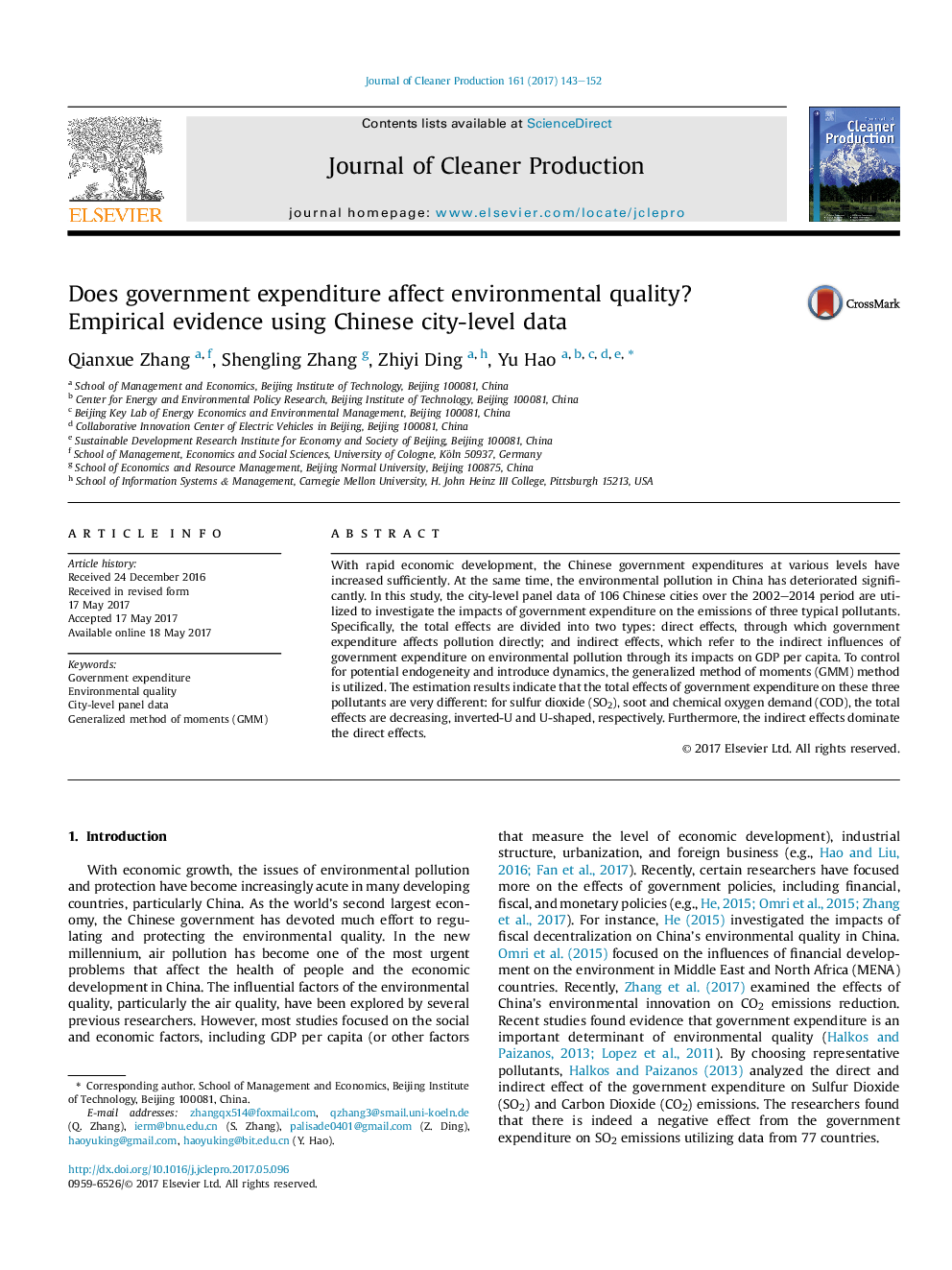| Article ID | Journal | Published Year | Pages | File Type |
|---|---|---|---|---|
| 5480823 | Journal of Cleaner Production | 2017 | 10 Pages |
With rapid economic development, the Chinese government expenditures at various levels have increased sufficiently. At the same time, the environmental pollution in China has deteriorated significantly. In this study, the city-level panel data of 106 Chinese cities over the 2002-2014 period are utilized to investigate the impacts of government expenditure on the emissions of three typical pollutants. Specifically, the total effects are divided into two types: direct effects, through which government expenditure affects pollution directly; and indirect effects, which refer to the indirect influences of government expenditure on environmental pollution through its impacts on GDP per capita. To control for potential endogeneity and introduce dynamics, the generalized method of moments (GMM) method is utilized. The estimation results indicate that the total effects of government expenditure on these three pollutants are very different: for sulfur dioxide (SO2), soot and chemical oxygen demand (COD), the total effects are decreasing, inverted-U and U-shaped, respectively. Furthermore, the indirect effects dominate the direct effects.
